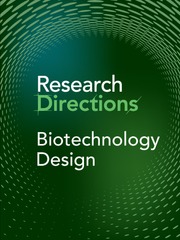Introduction
The field of Biodesign holds immense potential in transforming our understanding of the brain and enhancing the capabilities of biotech devices. Over the past decade, this interdisciplinary area has experienced rapid growth, driven by pioneering research, the rise of design-focused biotech startups, and the expansion of educational programs globally.
Biodesign and the brain
The brain, an extraordinarily complex organ with billions of interconnected neurons, presents a unique challenge for scientific exploration. Biodesign principles offer innovative tools and methodologies for studying the brain. For instance, bioengineered neural network models can provide valuable insights into brain function and disorders. Additionally, biodesign approaches enable the creation of advanced neuroimaging techniques for real-time observation of neural activity.
Enhancing biotechnological devices
Biodesign principles can significantly improve the performance and scalability of biotech devices. By integrating biological systems with technology, we can develop devices that are more adaptable, efficient, and capable of self-repair. For example, neuromorphic algorithms and circuits inspired by the brain can enhance the computational capabilities and energy efficiency of processors, while biomimetic materials can improve the durability and functionality of biotech devices.
Challenges and opportunities
Despite its vast potential, the field of biodesign faces several challenges. There is a lack of well-structured frameworks for sharing unique applications, foundational knowledge, and practical skills with newcomers. Access to best practices, material resources, and teaching strategies is unevenly distributed. To nurture a new generation of Biodesigners, it is essential to establish a consensus on biodesign pedagogy, practice, and theory, and to inspire a broader range of individuals and groups to embrace biodesign learning approaches.
Conclusion
The application of biodesign principles can greatly advance our understanding of the brain and enhance the performance and scalability of biotech devices. As we continue to explore the potential of biodesign, it is crucial to cultivate an inclusive and diverse community of Biodesigners, equipped with the necessary knowledge, skills, and resources to propel this exciting field forward. By doing so, we can unlock new frontiers in brain research and pave the way for groundbreaking advancements in biotechnology.
How to contribute to this Question
If you believe you can contribute to answering this Question with your research outputs find out how to submit in the Instructions for authors (https://www.cambridge.org/core/journals/research-directions-biotechnology-design/information/author-instructions/preparing-your-materials). This journal publishes Results, Analyses, Impact papers and additional content such as preprints and “grey literature.” Questions will be closed when the editors agree that enough has been published to answer the Question so before submitting, check if this is still an active Question. If it is closed, another relevant Question may be currently open, so do review all the open Questions in your field. For any further queries check the information pages (https://www.cambridge.org/core/journals/research-directions-biotechnology-design/information/about-this-journal) or contact this email ([email protected]).
Competing interests
The authors have no conflict of interest.






Comments
No accompanying comment.